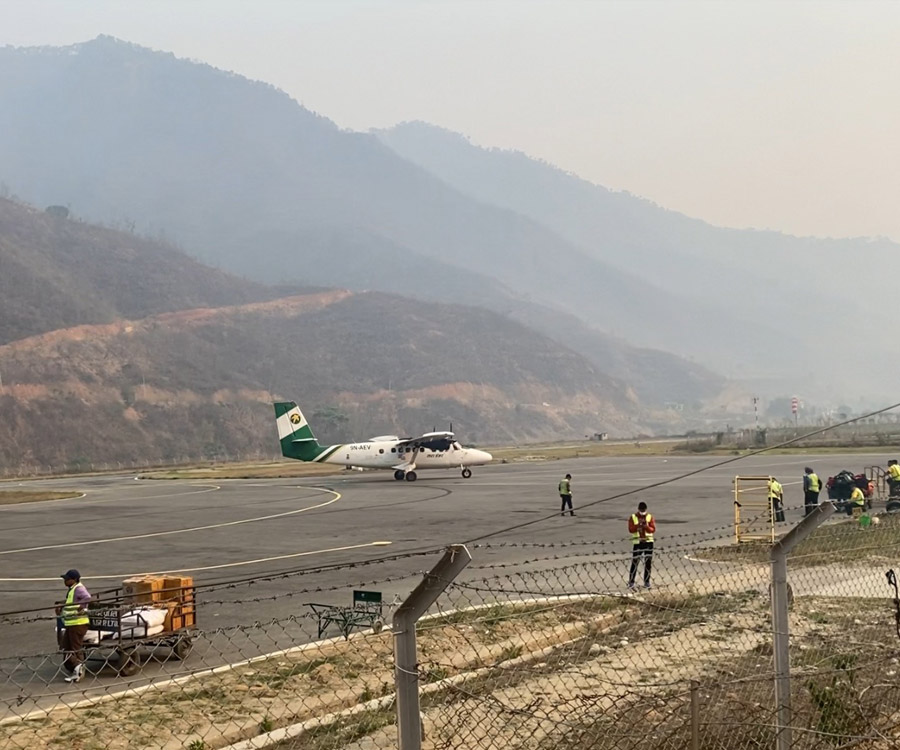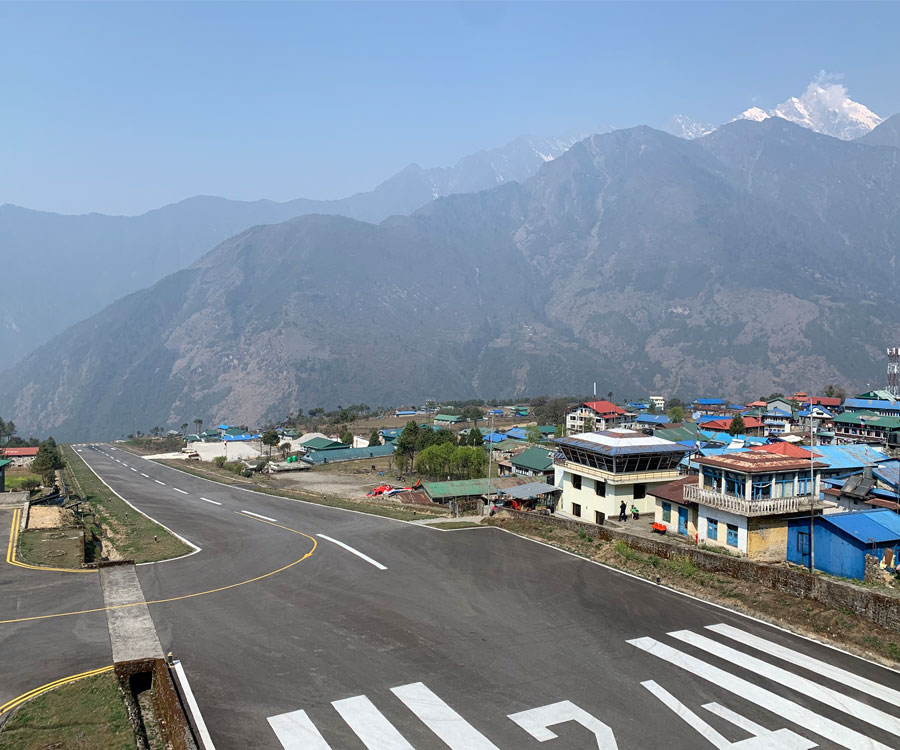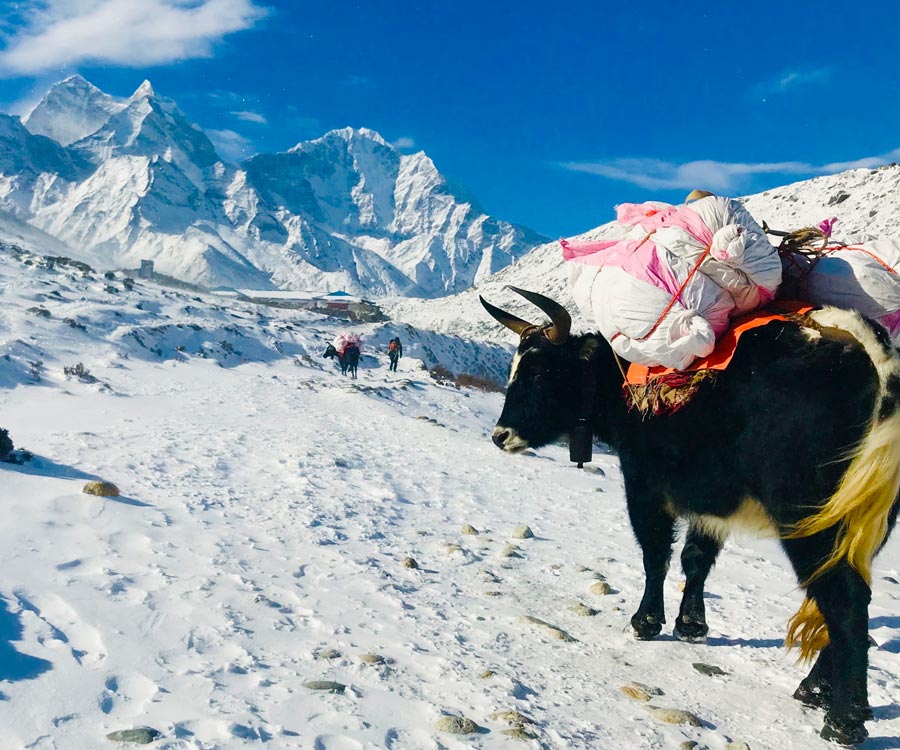- +977 9851074270
- info@mountainramadventures.com

Annapurna Circuit Trek facts
Total Trekking Distance: 170-230 KM
Required Days: 20 Days (if walking the complete route)
Permits: Annapurna Conservation Area Permit and TIMS Card
Trekking Starting Point: BhulBhule
Trekking Ending Point: Naya Pul
Maximum altitude: 5416 M Thorong La Pass
Accommodations Available: Guest House/ Tea Houses
Meals Available: Nepali, Indian, Tibetan and Western Cuisines
Annapurna Circuit Trek, considered to be one of the best trekking routes of the world filled with incomparable adventure filled trails through the dramatic terrains of the Himalayas and the warm and hospitable cultures is an mesmerizing journey through the heart of the Annapurna Conservation area in North Central Nepal. The trek spans around 230 KM (if trekking the whole way) during which the mesmerizing views of the Himalayas including 3 eight thousand peaks: Mount Annapurna(8091 M), Mount Manaslu (8163M) and Mount Dhaulagiri (8167M) along with the hospitable culture of the local ethnic communities along the trail.
The Annapurna Circuit Trek falls under the moderate category of trekking grade during which the highest elevation of the trek is at Thorong La Pass at 5416 M which is one of the highest Non-technical trekking Pass in the world. The Annapurna Circuit Trek can be extended to include Tilicho Lake at 4910 M (highest altitude fresh-water lake) making the surreal trek even more mesmerizing. 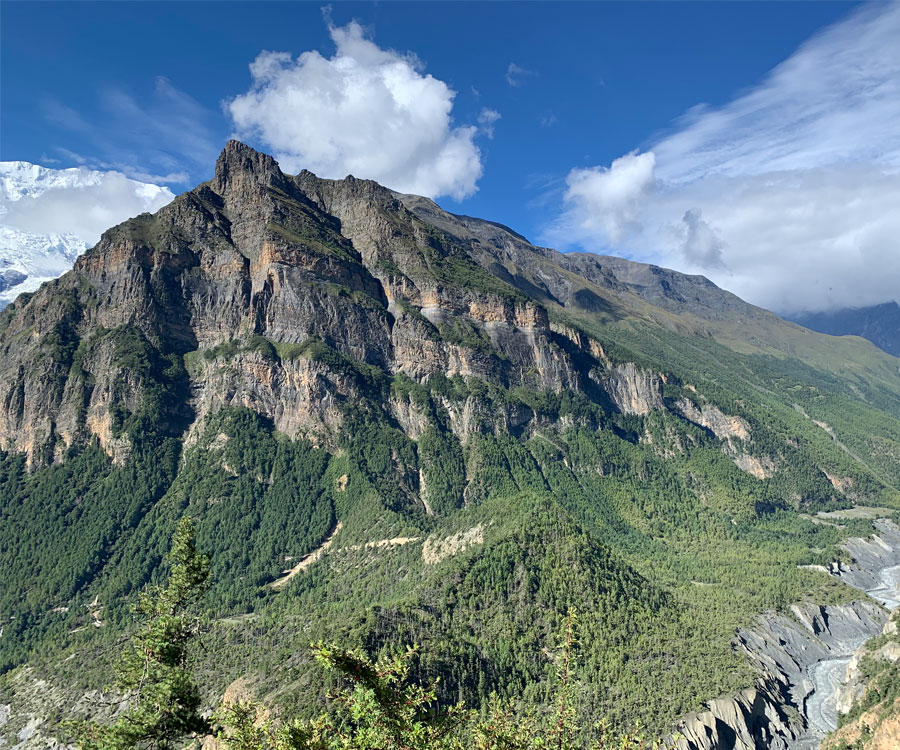
The complete guide of the Annapurna Circuit Trek will help you make a realistic expectation about the terrains, weather, culture, season and overall aspects for the smooth sailing of the trek. Even without intensive information one can trek through the beautiful terrains savoring every moment as trekking in the Annapurna Circuit Trail is mesmerizing for even seasonal trekkers at any given weather.
Annapurna Circuit During different Season:
Nepal experiences four seasons: Spring, Monsoon/ Summer, Autumn and Winter throughout the year each spanning for around 3 months. During each season the trekkers will be able to experience a unique blend of the Himalayas. The lower elevation of the trekking trail’s weather hugely depends upon the season whereas the weather condition above 3000 M usually remains chilly and cold.
The trekkers will be able to experience the change in the surrounding as they gradually gain altitude as the lush green forests of the lower trails turn into barren, providing an open stelar view of the High Himalayas. The trekkers experience will depend upon the season making it easy to have a realistic expectation for their trek.
Annapurna Circuit Trek during the Spring Season:
Spring season is considered to be the best time for trekking in the Himalayas. The season of Spring spans over the months of March, April and May during which the finest of the Himalayas can be experienced by the trekkers. The Spring season swiftly begins after the freezing months of winter during which the wild flowers along the trail began to bloom including the Rhododendrons, which covers the trail of the lower region’s and turns the lush green forest into beautiful shades of vibrant red.
During the months of March and early April trekkers can experience rainfall at the lower elevation and snowfall at the higher elevations. The Spring season is one of the busiest times in the routes as trekkers participate to experience the best of the beautiful trail. The average temperature of the trail ranges anywhere between 12-20 degrees celsius and the temperature at higher elevation can fluctuate between 6 to -4 degrees celsius. 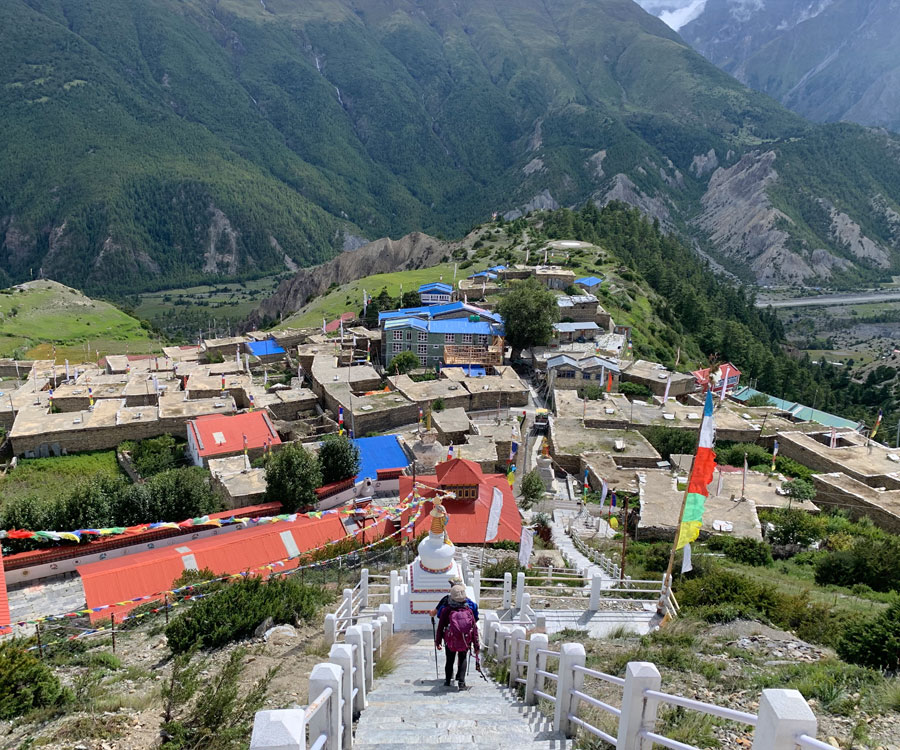
Overall the trekkers will have a wonderful trek during the months of Spring but as the season welcome’s mountaineers and trekkers from all around the world pre booking of accommodations and other facilities reduces the stress on travelers.
Annapurna Circuit Trek during the Summer/ Monsoon Season
The end of spring season marks the beginning of the Monsoon season in the Himalayas as the dark rain clouds begin to hide the views of the great Himalayas. The Monsoon season begins from the months of June, July and August during which the appeal of the beautiful trek decreases quite a bit.
During the monsoon season the offbeat trekking trail usually turns all muddy and slippery making it much more difficult to trek. The trekkers will need to carry water proof gears and rain ponchos for their journey. The trekkers will need to carry ointments and insect repellents as mosquitoes and leeches can make the trek much more difficult. As the Monsoon season and the Summer season can be experienced in the Himalayas at the same time the temperature is rather warm and humid.the risk of Thunderstorms and Landslides are also at its high during this time so, the trekkers are suggested to stay aware of their surrounding during their monsoon trek. However on the brighter side the river’s and waterfalls seen during the trek can be seen much more lively and during the Monsoon season a sense of freshness can be felt. Another plus point is that during the Monsoon season, trekking in the Annapurna Circuit is relatively cheap as many trekkers don't tend to participate during this time, decreasing the cost of accommodation and meals by a little bit.
Trekking in Monsoon is not impossible but due to the unfavorable conditions trekking can be a hassle for many and the views of the Himalayas are hidden due to the rainy clouds so it is much better to shift the plan during the Spring Season or Autumn Season.
Annapurna Circuit Trek During The Autumn Season
As the gloomy clouds of the Monsoon season gets swept away, clearing the views of the High Himalayas marks the beginning of the Autumn Season, arguably the peak and best season for trekking. The months of September to November marks the Autumn season in the Himalayas during which the trekking routes of the popular trekking destinations including Annapurna Region, Everest Region and Langtang Region are flooded with trekkers traveling to enjoy the glorious views of the Himalayas.
During the months of early September occasional rainfall can be experienced indicating the changing weather but usually around the end of the month the weather starts to clear up and the skies turn blue with the views of the mountains seen even more pristine and beautiful. The green leaves of the dense forest start to wither off the trees. During the Autumn season the temperature is ideal for trekking as the warm rays of sun makes the trek even more pleasant and the temperature gradually drops as the sun sets down. The trekking routes during this time are also in the best condition and trekking during this time is just best. As the month of November rolls over the temperature begins to drop as well as the day time decreases steadily as the winter season is just around the corner.
During the Spring season it is absolutely necessary to pre book the accommodations as the trekking traffic is high. The rates during this time can also hike a bit as most of the services will be pre booked. During the Autumn season usually the Nepalese festivals of Dashain and Tihar are also celebrated which can be enjoyed by the trekkers.
Annapurna Circuit Trek During The Winter Season
The Winter Season is another off season for trekking in the routes of the Annapurna Circuit Trek as the trekking trail is covered completely under a thick layer of snow making it difficult or even impossible to navigate during the peak winter. During the months from December to February winter season can be experienced. During the Peak Winter season the Tea houses and lodges are closed because the locals start to descend as the weather becomes unbearable at times.
During the month of December the number of trekkers starts to decrease and the trekking trails become barren as the harsh winter enters the Himalayas. However for the trekkers who can bear extreme conditions of the Himalayas they can trek the Annapurna Circuit Trek during this time as they won't regret it one bit as the winter season is just magical as the surrounding vista is completely under a thick blanket of snow at the higher elevation.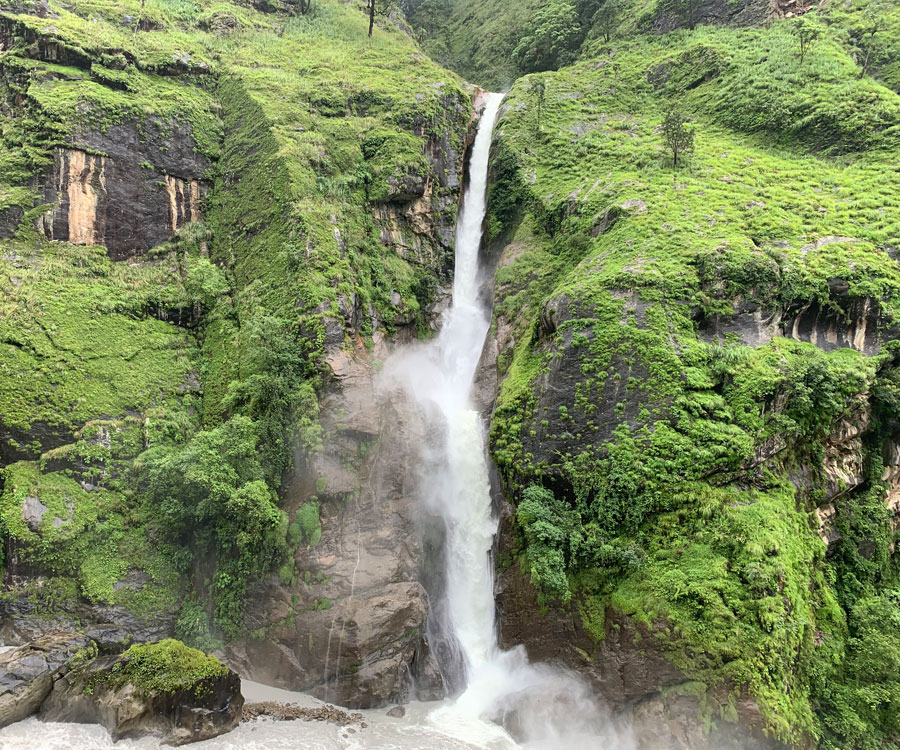
During the Winter season it is quite difficult to trek but to those who can bear the cold conditions the trek can be the perfect alternative to avoid the crowd and have an nirvanic experience. The prices are also quite low in comparison to the peak season of Spring and Autumn. The risk of thunderstorms and blizzards are also a huge problem during this season so proper gears including microspikes and warm gears are a must during the Winter season.
Outline Itinerary of the Annapurna Circuit Trek
Day 01: Kathmandu to Bhulbhule by bus.
Day 02 Bhulbhule to Syange
Day 03: Syange to Tal
Day 04: Tal to Chame
Day 05: Chame to Pisang
Day 06: Pisang to Manang
Day 07: Acclimatization day in Manang
Day 08: Manang to Khangsar (if not trekking to Tilicho then directly to Yak Kharka)
Day 09: Khangsar to Tilicho Base Camp
Day 10: Tilicho Base Camp to Tilicho Lake and back to Base Camp
Day 11: Tilicho Base Camp to Yak Kharka
Day 12: Yak Kharka to Thorung Phedi
Day 13: Thorung Phedi to Muktinath via Thorong La Pass
Day 14: Muktinath to Marpha (can take a vehicle and head to Pokhara Directly)
Day 15: Marpha to Ghasa
Day 16: Ghasa to Tatopani(hot spring place)
Day 17: Tatopani to Ghorepani
Day 18: Ghorepani to Poon Hill to Tikhedhunga
Day 19: Hille to Nayapul and drive to Pokhara.
Day 20: Pokhara to Kathmandu by tourist bus.
Note:The Trip includes the classical trail of the Annapurna circuit including all the possible stops including Tilicho Lake and Ghorepani. The trekkers can adjust the itinerary by excluding them if they want, fitting their travel preferences.
Total Trek Distance for Annapurna Circuit
- The Shortest Trekking Route which begins from Manang Village and ends in Ranipauwa Village of Muktinath is just around 36 KM long and will take only 3 days of trekking without any stops for acclimatization. Having an extra day for acclimatization is necessary for the trek as without an extra day the risk of Altitude Sickness can become a real problem.
- The Longest Trekking Route for the trek is just around 280 KM including Lake Tilicho. The beginning of the trek will be from Bhulbhule and will end in Nayapul. The trek only will take around 18 Days in total with a day for acclimatization in Manang Village. The route is witnessing less trekkers nowadays as trekkers are taking the bus a bit further from Bhulbhule to Jagat or even further.
- The Standard Trekking Route for the trek is just around 140 KM long which begins in Jagat and ends in Jomsom. The rest of the trail can be covered via a vehicle through the off-road motorway.
Travel Insurance For The Trek
The Annapurna Circuit is a beautiful adventure through the high Himalayas during which the trekkers will be passing through offbeat terrains and a high Himalayan Pass, Thorong La Pass which is at an elevation of 5416M. While participating in adventure in the Himalayas at any given time the conditions can change without abruptly and cause significant damage during which immediate medical attention and evacuation might be required for the trekkers during which the insurance plays a significant role.Travel insurance is not yet made compulsory y the concerned authorities in Nepal for trekking however, having a Travel insurance can come in clutch as it can cover the cost of the evacuation and medical expenses partially or fully. Altitude Sickness is also a threat during the trek so, having an insurance plan is crucial whilst in the Himalayas.
Traveling With A Team (Guides and Porter)
Traveling through the Annapurna Circuit with a designated team is much more comfortable and enjoyable as the trekkers will be covering a total of around 280 KM in a span of 18 days averaging around 15.5 KM per day. Having a team will ensure that the trekkers are well informed about the surroundings and the baggage of the trekkers will be carried by the guides/ porters. As per the policies of the authorities international trekkers need to be accompanied by a licensed guide to participate in any trek within the protected areas of Nepal. The trekkers can hire guides and porters from the Thamel area or can contact the travel agencies who will make the necessary arrangements of all facilities as well as guides and porters for the trek.
Difficulty Of The Annapurna Circuit Trek
Annapurna Circuit trek is a moderate trek with mostly off-beat paths with both comfortable and challenging ascents and descents. The trek can be done by beginners as well as seasonal trekkers who are physically and mentally prepared to explore the Himalayas. The major challenges during the trek is high altitude which can be overcome easily by resting for acclimatization. The unpredictable weather of the Himalayas can also become a challenge during the trek so the trekkers should be packing basic essentials for the trek. The trekkers are also recommended to have a body checkup before traveling for the trek to see if the trekkers are fit for the trek or not.
Is The Annapurna Circuit Trek Worth It ?
The Annapurna Circuit Trek is absolutely worth it even though most of the trail of the classical route can be covered via vehicles, the unmatched landscape of the Himalayas and the thrill of adventure is simply worth it. The Annapurna Circuit Trek is listed among the best trekking destinations in the world due to its unparalleled beauty and adventure. Thousands of trekkers from all around the world participate in the trek as the views are simply awe-inspiring. Trekkers who have already traveled through the trail even return back during the alternative seasons to have an unique experience of the trek.
Permits For The Trek And How To Get Them?
For the Annapurna Circuit Trek the trekkers will be required to obtain two permits which can be easily obtained from the Department of Immigration in Kalika Marg, Kathmandu or can be obtained from the Tourism Board in Damside, Pokhara. The offices will be closed on Saturday and public holidays and will be operating from 10 AM till 5 PM on other days. The trekkers will need to get two permits for the trek which are the Annapurna Conservation Area Permit and the TIMS Card(Trekking Information Management System). The cost of the permits will be around 5000 NPR per person. 3000 NPR for ACAP and 2000 NPR for TIMS Card. The TIMS Card is a single entry permit and after exiting the premises cannot be used again.
To apply for the permits the trekkers will need to have their original passport, travel insurance documents, contact person within Nepal and 4-5 passport size photos which can be taken at the office directly.
Essentials for the Trek
The trekkers need to be well prepared for the trek and pack all the essentials. Below is a breakdown of essentials for the trek divided into categories. The number of clothing can depend upon the planned itinerary.
Clothing: waterproof Jacket and Track, Lightweight and warm down jacket, trekking t-shirt (4-5), lightweight trekking tracks, trekking/ Hiking shoes, Warm and protective gloves, Thermal wear top and bottom (1/2), trekking socks(3-4), Light socks for day time (4-5), Spare underwears, Sun hat/ cap, woolen hat, scarf, windbreaker.
Personal Kit: Sanitizers, wet wipes, Toothbrush and toothpaste, shampoo, comb, sunscreen, cold cream, lip balm, sun glasses.
Personal medical Kit: Prescribed medicines (if any), band-aid, cotton, antiseptic cream, paracetamol, Vomistop, Antifungal Cream, insect repellent.
Electronic Gadget: spare batteries, power bank, head lamp, cameras, charger.
Documents: Identity Card, Insurance, permits, Passport, Visa, photos.
Note: The laundry facilities are available in Manang village and as trekkers are recommended to stay there for an additional day they can use the laundry facility and dry their clothes for an extra day.
FAQ’S
Does it snow during the Annapurna Circuit Trek?
Yes, the higher region of the Annapurna Circuit Trail is covered in snow for the most part of the year and during the trek the trekkers will be able to experience snowfall at the higher elevation. The trekking routes during the Winter season will be mostly covered by a thick layer of snow.
When to Trek if you want to avoid crowds?
The trekkers can participate in the Annapurna Circuit Trek during the Winter season or the Summer/ Monsoon season during which the trekking routes will be empty but the views of the Himalayas can be blocked by the clouds during the time and navigating through the trail is also difficult during this time. On the other hand the trekkers will be able to travel cheaply and will get accommodations without pre-booking.
Is the Annapurna Circuit Trail open throughout the year?
Yes, the trekking trail of the Annapurna Circuit Trail is open throughout the year and can be experienced by the trekkers during any 4 seasons. The trek‘s difficulty will also depend upon the season as during the Winter and Monsoon season trekking can become a bit of a hassle.
What is the coldest and hottest month to visit the Annapurna Circuit Trek?
The month of January is the coldest in the Himalayas as temperature can reach up to -13 degrees or even lower at the higher elevation and at the lower elevation the temperature can be anywhere around 4-12 degrees celsius. The Hottest month is July during which the temperature of the lower region can be anywhere around 24 degrees celsius and at the higher elevation can be as low as 2 to -2 degrees celsius.
When should I book the trek?
Booking for the trek if traveling during the season should be done at least 2 months prior to the travel date and it is better to do it through the travel agencies as they will make the necessary arrangements for the trek. The trekkers if trekking during the off season then they can book around 2 months in advance as the rate will also be relatively cheaper and the trails will be less crowded.
What is the Budget for the Trek?
The total cost for the trek depends upon the itinerary and season of trekking. The trekkers can see the price for the trip from Annapurna Circuit Packages. Additional charges for the trek can be personal expenses and emergency fund for which the trekkers are suggested to carry around 250 USD in total for the entirety of the trek. The trekkers wil; need to pay for battery charging, hot shower, hot water etc during the trek which will be covered by the funds for the trek.

